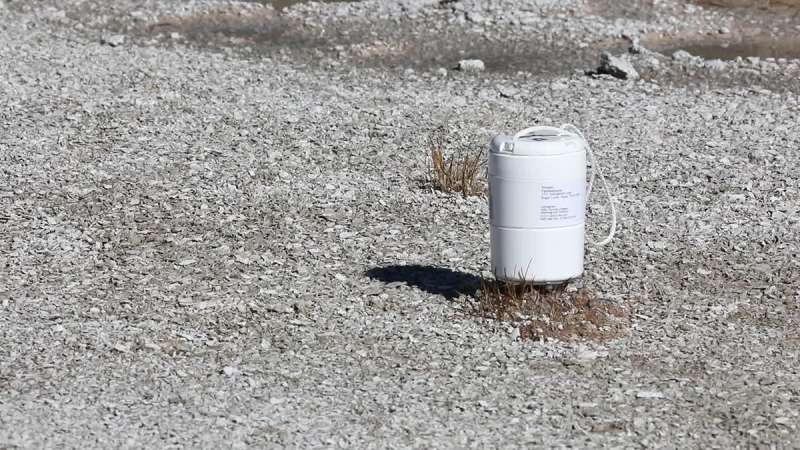Potential of leaking modes to reveal underground structure

Uncovering the geologic structure beneath Earth's surface is important for a variety of reasons, including identifying natural resources and studying earthquake hazards. Scientists image Earth's subsurface by observing seismic waves that travel through our planet.
When an earthquake occurs, several types of waves radiate from the event's source. P waves and S waves move through the interior, and Love and Rayleigh waves (known as "surface waves" or "normal modes") move across Earth's surface. The speeds at which these waves travel and how each type is scattered in the subsurface can reveal a wealth of different information about underground structure.
To study seismic waves, scientists generally must wait for earthquakes, which are unpredictable, or create their own using explosions. In the past couple of decades, however, researchers have developed additional ways to study the subsurface noninvasively by using ambient noise, the constant hum of sounds made by people and natural processes, like mining activities or waves crashing on a beach.
In a new study, Li et al. demonstrate the possibility of imaging the subsurface using not only normal modes produced by ambient noise, but also another naturally occurring type of seismic wave called leaky, or leaking, modes. Leaky modes can occur when a seismic wave is "trapped," bouncing back and forth between two layers of rock. When energy escapes from this bouncing wave, it creates a separate wave referred to as the leaky mode. Compared with normal modes, which are more sensitive to S wave velocity structure underground, leaky modes are more sensitive to P wave velocity structure.
The authors looked at 1 month of ambient noise picked up by a dense array of seismometers called the Large-n Seismic Survey in Oklahoma (LASSO). Studying both normal and leaky modes extracted from the seismic data, they calculated the speeds at which the waves had moved through the subsurface. Those speeds, in turn, are specific to properties of the rocks below, such as their density and elasticity.
The research was published in Geophysical Research Letters.
More information: Zhengbo Li et al, Multiple Leaking Mode Dispersion Observations and Applications From Ambient Noise Cross‐Correlation in Oklahoma, Geophysical Research Letters (2021). DOI: 10.1029/2021GL096032
Journal information: Geophysical Research Letters
Provided by American Geophysical Union
This story is republished courtesy of Eos, hosted by the American Geophysical Union. Read the original story here.





















